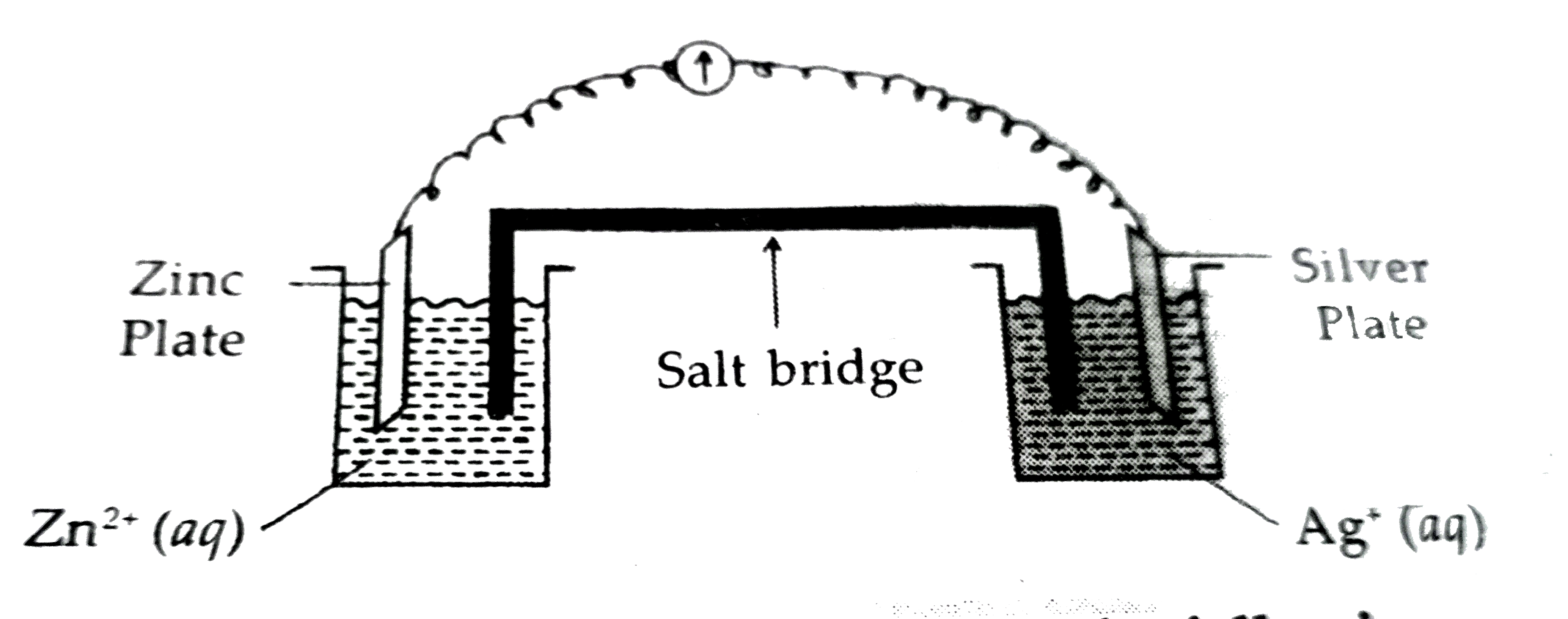Explan the following :
(i) Concentrated HNO3 turns yellow in sunlight.
(ii) Bleaching powder loses its bleaching property when it is kept in an open bottle for a long lime.
(i) 2HNO3→H2O+2NO2+12O2
In sunlight, slight decomposition of nitric acid produces nitrogen dioxide which is brown in colour. It dissolves in nitric acid to give pale yellow colour.
(ii) CaOCl2+H2O→Ca(OH)2+Cl2
In the presence of moisture, bleaching powder loses chlorine, so its bleaching action decreases.
Topper's Solved these Questions
- P-BLOCK GROUP 15 ELEMENTS - THE NITROGEN FAMILYBOOK - CENGAGE CHEMISTRY ENGLISHCHAPTER - P-BLOCK GROUP 15 ELEMENTS - THE NITROGEN FAMILYEXERCISE - Exercises Archives (True/False)
2 Videos
- ORGANIC COMPOUNDS WITH FUNCTIONAL GROUPBOOK - CENGAGE CHEMISTRY ENGLISHCHAPTER - ORGANIC COMPOUNDS WITH FUNCTIONAL GROUPEXERCISE - Archives Analytical And Descriptive
24 Videos
- P-BLOCK GROUP 16 ELEMENTS - THE OXYGEN FAMILYBOOK - CENGAGE CHEMISTRY ENGLISHCHAPTER - P-BLOCK GROUP 16 ELEMENTS - THE OXYGEN FAMILYEXERCISE - Archives Subjective
10 Videos
Similar Questions
Explain the following:
(a) In the preparation of HI from KI , phosphoric acid is preferred to sulphuric acid.
(b) Boiling point of HCl is lower than HF.
(c ) Bleaching powder loses its bleaching property when kept in an open bottle for a long time.
View SolutionBleaching powder loses its power on keeping for a long time
because
View SolutionConcentrated HNO3, upon long standing, turns yellow-brown due to the formation of
View SolutionPredict the products when the following reactions are carried out
(i) Bleaching powder reacts with lead nitrate in alkaline medium.
View Solution(a) Explain the following phenomena with the help of Henry's law.
(i) Painful condition known as bends.
(ii) Feeling of weakness and discomfort in breathing at high altitude.
(b) Why soda water bottle kept at room temperature fizzes on opening?
View SolutionGive reason for the following:
(i). Silver ornament gets tarnished when exposed to atmosphere for a long time.
(ii) Silver nitrate solution is kept in dark coloured bottles.
(iii). Why does AgNO3 produce a black stain on the skin.
View SolutionBleaching power is a mixed salt of hydrochloric acid and hypochlorious acid. It has the formula, CaOCI2.H2O. It is manuafactured by the action of chlorine on dry slaked lime at 40∘C. There is also a view that bleaching power is a mixture [Ca(OCI)2+CaCI2.Ca(OH)2.H2O]. The amount of chlorine obtained form a sample of bleching power by the treatement with excess of dilute acids or CO2 is called a available chlorine. A good sample of bleaching power constains 35−38% of available chlorine. On long standing, it undergoes auto-oxidation and the amount of acvailable chlorine decreases. The estimation of available chlorine is done volumetrically by (a) iodometric method or by (b) aresenite method. In textile industry, the cotton cloth is mainly bleached with the help of bleaching power.
3.55 g of bleachig power when treated with acetic acid and excess of KI liberated iodine which required 60 mL of 0.5 N sodium thiosulphate solution. The percentage of available chlorine in the sample is
View SolutionPredict the products when the following reactions are carried out:
(A)Red lead reacts with concentrated HCl.
(B)Ammonia reacts with excess iodine.
( C)Bleaching powder reacts with lead nitrate in alkaline medium.
(D)Chlorine is passed through heated freshly precipitated by HgO.
(E)In acidic medium when SO2 is passed through NaClO3.
View Solution(a) When a bright silver object is placed in the solution of gold chloride, it acquires a golden tings but nothing happens when it is placed in solution of copper chloride. Explain this behaviour of silver.
[Given : E∘Cu2+/Cu=+0.34V,E∘Ag+/Ag=+0.80V,E∘Au3+/Au=+1.40V]
(b)
Consider the figure given above and answer the following questions :
(i) What is the direction of flow of electrons?
(ii) Which is anode and which is cathode?
(iii) What will happen if the salt bridge is removed ?
(iv) How will concentration of Zn2+ and Ag+ ions be affected when the cell functions ?
(v) How will concentration of these ions be affected when the cell becomes dead ?
View Solution(a) A steady current of 2 amperes was passed through two electrolytic cells X and Y connected in series containing electrolytes FeSO4 and ZnSO4 until 2.8 g of Fe deposited at the cathode of cell X. How long did the current flow ? Calculate the mass of Zn deposited at the cathode of cell Y
(Molar mass : Fe= 56 g mol−1 Zn-65.3g mol−1, 1F -96500 C mol−1)
(b) In the plot of molar conductivity (∧m) vs Square root of concentration (c1/2), following curves are obtained for two electrolytes.
A and B:
Answer the following : (i) Predict the nature of electrolytes A and B. (ii) What happens on extrapolation of ∧m to concentration approaching zero for electrolytes A and B ?

View Solution
